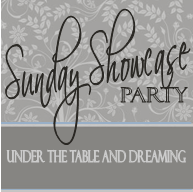As I mentioned in
this post a few days ago and
this post from a long time ago we fabricated and installed our copper counter tops ourselves. Before ordering our supplies I frequented this
garden web forum. It is a long thread but if you are really considering copper surfacesI suggest you read it. There are a few really great tutorials on there and the last one is pretty much the way we did it.
The whole process is very similar to applying a regular laminate. Basically you are just taking this very thin sheet of copper and laminating it to a stronger base.
As I said previously we used 16oz copper roofing material instead of the recommended 20oz sheeting. We were just very careful not to dent or bend it and it worked out fine. we transported it from the supplier to ourhome sandwiched flat between 2 sheets of plywood instead or the recommended method or rolling it up, cause that's just stupid!
We started by removing all the previous plywood all the way down to the cabinets because the exsisting counter was not level and the plywood had extensive water damage. If your surface is level and in good condition you can just lay the mdf right on top of it. I have heard of people laying the copper on top of laminate but I do not recommend it because the glue is designed to soak into the mdf which it obviously could not do on laminate.
Next we cut sheets of 1/2" plywood and screwed it to the the top of the base cabinets. On top of the plywood we placed the sheets of 3/4" mdf. At the corner of the L shape we used miter bolts in holes we routered out from underneath to join the 2 sections securely.
To secure the mdf to the plywood we applied construction adhesive in between the plywood layer and the mdf layer and then screwed them together from underneath (ie, inside the cabinets up into the plywood and mdf) But we did not do this until after the copper had been applied, so that we could easily slide the entire unit out to clamp the front edge. confusing I know but stick with me.
For the edges we screwed oak boards into the mdf and plywood before applying the copper sheeting. Mdf is relatively soft and will dent easier than oak will. This is a pretty standard way of doing edges when applying regular laminate. After screwing the oak boards to the sides we then filled and sanded the holes perfectly smooth so they would not show under the thin layer of copper.
We decided to apply the copper to the sides before putting the top on to avoid having the seam on top. If you have access to or would like to make a sheet metal brake then you can just bend it to a 90 angle and glue it down. I however did not want a rounded edge, but there are a few tutorials around if that's the way you want to go.
We cut strips from our large sheets of copper with a dremel in our garage. This step takes forever but makes a perfect cut without warping the copper as shears would. Simply lay the sheet out with a board underneath to elevate it a bit. then mark your line, put goggles on, and patiently cut along your line. Cut your strip about a quarter inch wider than you need so it can be filed down to fit perfectly after it is put in place.
Prep your surfaces by lightly sanding the back of the copper and cleaning both the oak edge and the copper with rubbing alcohol.
This is the ONLY adhesive I would use, it's worth the money, cleans up with water, is VOC free and has a long working time. You can order it several places but I purchased mine and a glue roller
here.
Follow the directions on the glue and apply glue to the back of the copper and oak edge and tape into place.
(See how the entire thing is scooted out a bit so we can clamp to the back edge. later we glued and screwed the mdf to the plywood.)
It is best to have a few sets of hands to quickly clamp the edge. The glue allows quite a bit of working time, but I do recommend cleaning up any that squeezes out with a damp towel while it is still wet. As you can tell we used A LOT of clamps, the more the better! We placed another board over the copper before clamping so they would not mar the copper.
Allow the edges to dry overnight before removing the clamps. Once dry, file and sand the top edge flush with the mdf layer. The copper top will go over this so it is important that it is perfectly flat and smooth.
Next we cut the sheets to just a bit larger than what we wanted our finished size to be.We used the factory edge of the copper for the front and placed our cut edge in the back, this is only important if you are doing a "L" shape or long span and have to have a seam on the top. Ideally you want to mate the 2 factory edges together to make a perfect seam.
Notice in the picture above that we had already cut out the sink hole out of the mdf sub-layer. Do this, but wait to cut the sink hole in the copper until after it is glued down.
Prep the back of the copper and the top of the mdf by lightly sanding the copper and cleaning both with rubbing alcohol. We had an "L" shape so we chose to lay 1 segment at a time.
Apply the glue with a roller CAFEFULLY and lay down the copper. Smooth out all air bubbles and cover with another sheet of mdf. You will do this so that the pressure from the clamps is evenly distributed and that the clamps do not mar the surface.
Here is a general idea of how it should be laid out so that the seam will be on the edge and not on the top. Pretty snazzy sketch huh?
This ridiculous picture is because we figured that the more weight and pressure we applied the less air bubbles we might get. So we placed just about every portable heavy object in our home on top of the mdf. It worked too because there are no air pockets under the copper. Also we did not apply too much weight on top of where the sink would be to avoid denting the copper that had no mdf underneath it.
After allowing the glue to dry overnight we removed the clamps, scooted the whole shebang back and into place and glued and screwed it to the plywood layer from underneath as I discussed earlier.
Next, file and sand so that the edge appears to be 1 solid piece. As I have mentioned before I'm a jeweler/ fabricator so this went fast and easy for me. Mostly you just need to make sure that the edges feel smooth and that there is no gap between the top layer and the edge, If there is then you can squish in some just for copper epoxy putty.
I purchased mine at Ace hardware and followed the manufactures instructions for use. this is also what we used to fill the seam on the top of the counter. I simply smooshed it into the clean crack, waited for it to dry then sanded it flush.
here is what the finished edge looks like
See how it looks like 1 solid piece rather than 2 sheets butted together.
Here is the only outside corner. It looks like the corner is sharp but is is not at all sharp, it actually slightly rounded at the point. also notice the bit of oxidation on the bottom, it can easily be cleaned off with a scrubby.
Here is the only inside corner that also lines up with the only top seam. The white in the crack is a but of oxidation that I scrubbed off after I snapped this pic.
In the end we are definitely happy with how we did the counter top but we had to do a lot of figuring and problem solving to make the other methods we had seen work best for our space. If you should choose to install a similar surface you will probably have to do a lot of your own adjusting to make it work for you.
It has been just over a year and I am happy to say that our counter still is scratch/ dent free with the exception of 1 small dent that came with the copper sheet. We have no air bubbles and still love the way it looks is our home.
If you have any additional questions feel free to ask, I'm always glad to share and help.
Peace and a penny for your thoughts!
 & paper cuts
& paper cuts

















































































































